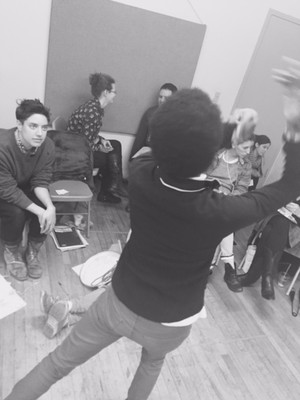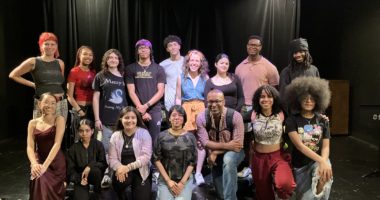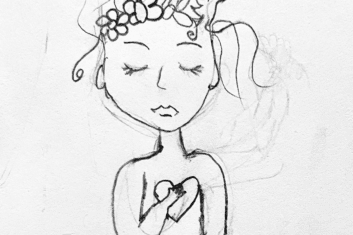Inquiry-based Question: How can we use sensory detail and movement to express our collaborative group poem about childhood memories?
Every single Saturday Workshop has been really informative and fostered creativity and connection. I am so thankful to be a part of this year’s group and enter the new year knowing much more about how to effectively teach and engage students through the arts. The five big takeaways below are a part of large breadth of equally important and useful information.
1. Honor Your Creative Process
During the first workshop we had meaningful discussions and activities revolved around our relationship with our own creative process. We asked ourselves questions like “what inspires us to create?” and “what creative elements show up in our work?” At one point during the day Program Director for Training & Internships, Patti Chilsen, and TATIP Facilitator, Renée Watson, laid out different art materials and musical instruments and asked us to create our own artist maps.
I created a dance to show what my journey has been like so far. I loved every moment of having time to create something in the moment. It also felt really nice being a room with other people creating something as well. We all shared our stories with a partner. I really enjoyed this experience because it made me realize how important it is to pay attention to the creative process because it can affect one’s teaching approach.

2. Explore Inquiry-based Learning
Inquiry-based learning can be really helpful for Teaching Artists as far as providing a way to gain clarity about a lesson plan or teaching path. For example, inquiry questions like “how can I incorporate multiple intelligences? How can I create a lesson plan where less is more? How can every voice be included? How can I scaffold this dance phrase?”
3. Use Multiple Gateways to Teach
Learning about Howard Gardner’s “9 Types of Intelligences” and experiencing firsthand how it works (as Patti and Renée demonstrated using multiple intelligence throughout the workshops) has made me feel more aware of the reality that people learn in different ways. As a dance discipline I generate inquiry-based questions to help me think about ways I can acknowledge and implement for example, visual/spatial intelligence in a dance class or bring in musical intelligence.
4. Scaffold, Scaffold, Scaffold
It’s important to create a container or structure for learning where each part of a lesson plan supports the other and can be easily processed. Right now, I’m learning how to scaffold dance and I have learned it’s about breaking it down, especially for little kids and connecting the building blocks.


5. Be Intentional with Guided Noticing
Take time to engage students more with the content of the lesson plan, asking open ended questions like “what do you notice?”, and expanding on a student’s question, response to a question or a statement.


-Simone Johnson, TATIP Trainee, Dancer



